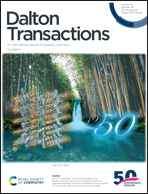Significant improvement of the lithium-ion conductivity of solid-state electrolytes by fabricating large pore volume hollow ZIF-8†
Abstract
Metal–organic frameworks (MOFs) emerging as a type of functional material have been widely used in electrochemical energy storage and conversion in recent years. Hollow MOFs with a large pore volume and surface area can increase the contact area between active materials and electrolytes, thus improving the ionic conductivity of the materials. Herein, we obtained a kind of hollow MOF (ZIF-8) using carboxylate-terminated polystyrene microspheres as exterior templates. Transmission electron microscopy and N2 adsorption/desorption analysis revealed that the average cavity diameter of hollow ZIF-8 is 1 μm. Moreover, hollow ZIF-8 exhibits excellent electrochemical quality with an ionic conductivity of 7.36 × 10−4 S cm−1, a lithium ion transference number of 0.83 and an activation energy of 0.15 eV in a wide stable electrochemical window of 2.0–6.5 V at room temperature. Compared with the traditional non-hollow ZIF-8, the electrochemical performance has been improved obviously. Consequently, our strategy of fabrication of large pore volume hollow MOFs provides a new perspective for the development of solid electrolytes with excellent lithium ionic conductivity.



 Please wait while we load your content...
Please wait while we load your content...